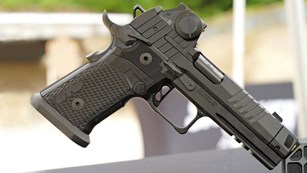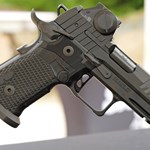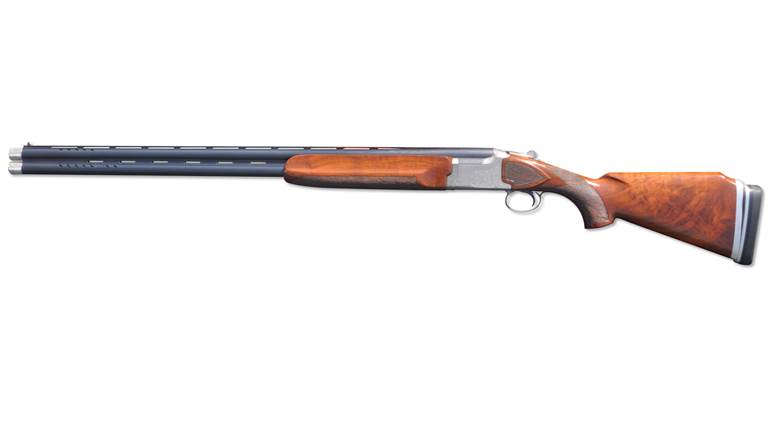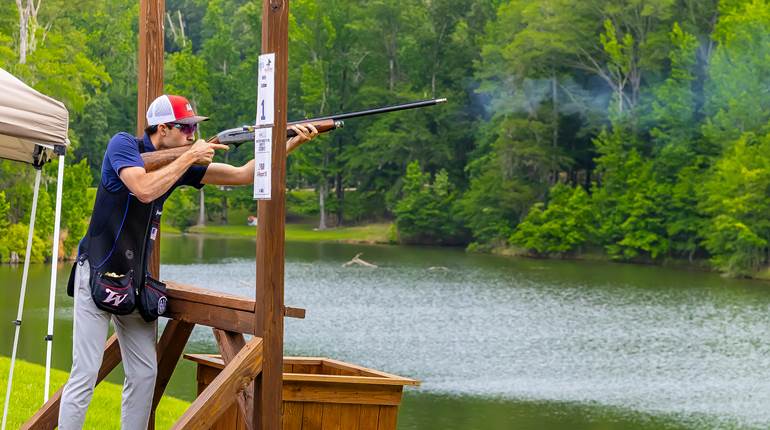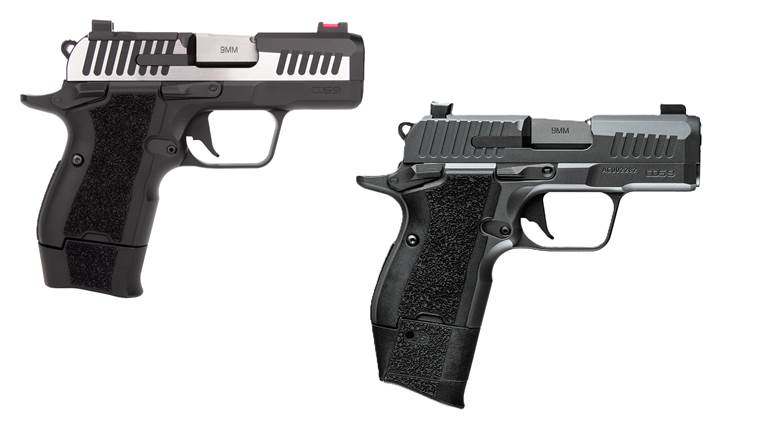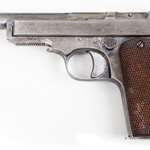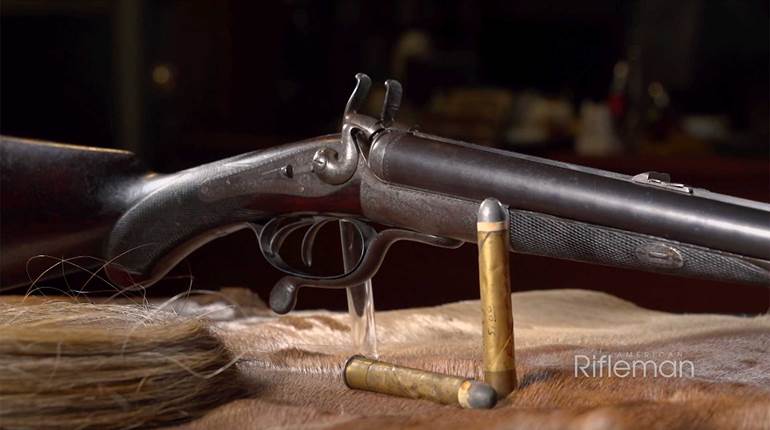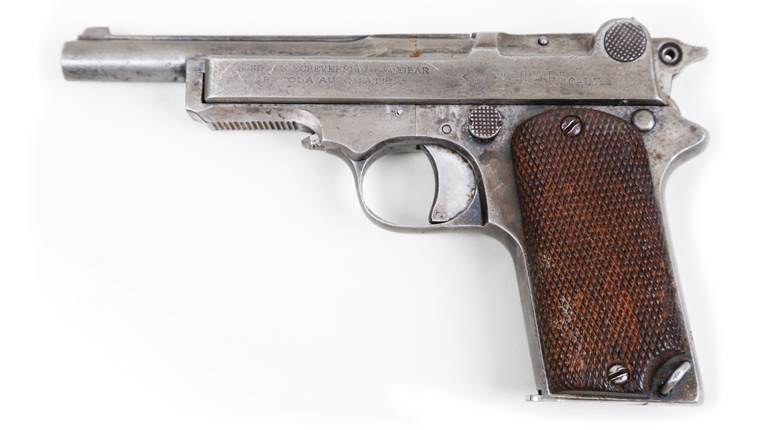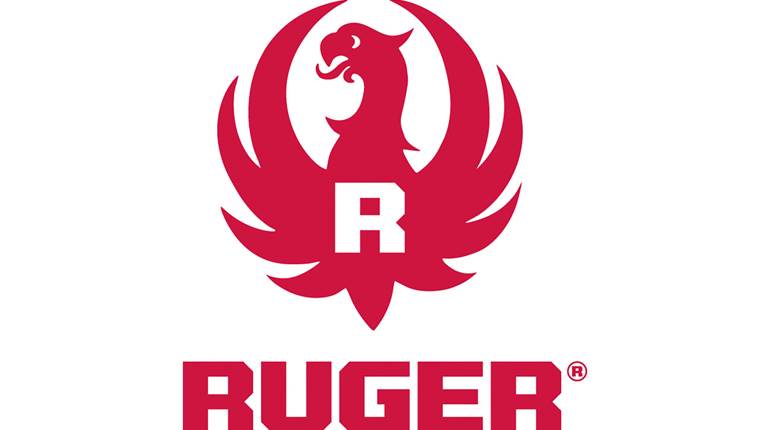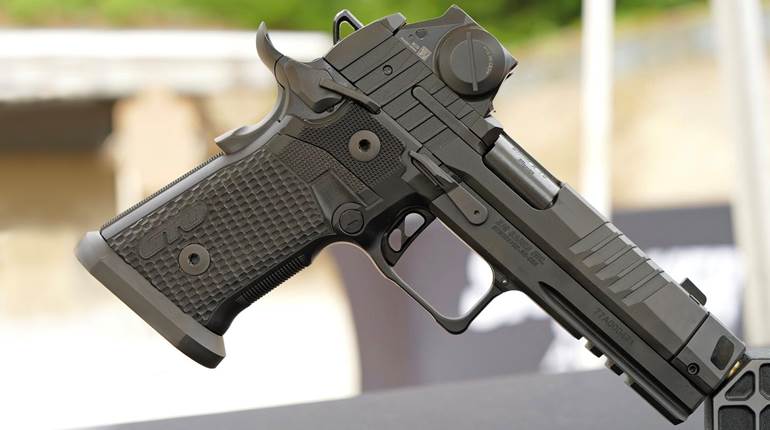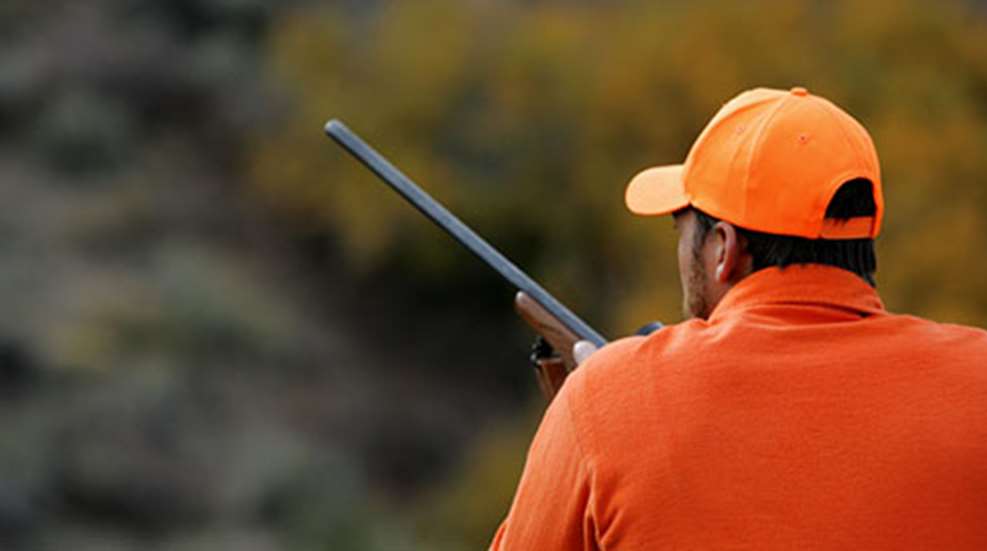
"Deer rifle." The term doesn't just roll from the lips. It's not particularly euphonic-sort of rough, like the people who settled this country. But deer rifles have been a major component of peacetime civilian gun sales for more than a century. Mention the words anywhere in this country, and each individual has a vision of his or her notion of what a deer rifle is. For some it may be a stainless steel, synthetic-stocked super-magnum; others visualize a classic lever-action. Still others see a pump, semi-automatic or a fine, old bolt-action stocked in American walnut with a low-power scope or, perhaps a receiver sight. One thing virtually all of these rifles share though, they are all American made. Let's take a look at an abbreviated history of the American deer rifle.
During the War Between the States, a few of these then-new-fangled repeating rifles were brought out, and their impact was immediate. Confederates called them "that damn Yankee rifle you load on Sunday and shoot all week." That conflict was the first to bring individual firepower concept to the light of day. By the time of the 1873 Winchester, that concept was in full bloom.
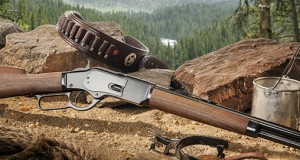
But the '73 had some faults. Its cartridge was really a handgun round. The .44-40 lobbed a 200-grain bullet at some 1,200 feet per second-like a hot .44 Spl. revolver load today-and its trajectory and power was limited. The fast, repeat-shot capability was needed because it often took more than one shot to anchor even a small deer. The rifle was limited as well; there was no room for a more substantial cartridge, and the toggle-link lockup wasn't strong enough to load anything much hotter anyway. Still, the Model 1873 Winchester wears the moniker, "The gun that won the West," and more than 720,000 copies of it were made over its half-century production. For much of that time, it was the rifle against which all others were measured, and it killed a tremendous number of deer.
Three years later an attempt was made to give hunters, especially western big-game and bear hunters, more power to deal with large game. Essentially, the '73 was put on steroids and christened the Model 1876. It was chambered in several big-bore blackpowder cartridges up to .50 caliber, however when Winchester swelled the lever 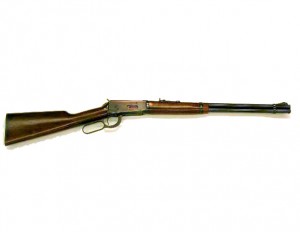 action to accommodate these cartridges, it just missed making it long enough to handle the .45-70 Government round. The John Browning designed Model 1886 took care of that oversight, and though many feel it is too large a rifle for deer, the'86 has put many a deer on the skinning pole.
action to accommodate these cartridges, it just missed making it long enough to handle the .45-70 Government round. The John Browning designed Model 1886 took care of that oversight, and though many feel it is too large a rifle for deer, the'86 has put many a deer on the skinning pole.
Then in 1894 a whole new deer rifle came on the scene. Another Browning design, the Model 94 Winchester redefined the term deer rifle. A year later, the .30-30 was introduced along with smokeless powder. Now it was possible for any decent marksman to kill a deer at 200 yards. With more than 6 million Model 94s produced, there is no doubt it has earned the name Deer Rifle. Some 120 years later it is still used by thousands to put deer in the freezer.
Arthur Savage came out with the Model 99 lever-action in 1899. Savage saw the trend toward bottleneck cartridges, and it was well-known that pointed bullets shot flatter than their flat-point counterparts. But the tubular magazines of the Winchesters would not safely 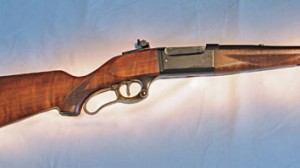 handle the aerodynamic profile since the point of one bullet rests on the primer of the next in the magazine. Savage developed a rotary magazine that solved that issue, and several of his cartridges-the .303 Savage, .300 Savage and the .250 Savage (.250-3000)-became favorite calibers in his handsome lever-action.
handle the aerodynamic profile since the point of one bullet rests on the primer of the next in the magazine. Savage developed a rotary magazine that solved that issue, and several of his cartridges-the .303 Savage, .300 Savage and the .250 Savage (.250-3000)-became favorite calibers in his handsome lever-action.
As the 20th century was born the industrial revolution was in full bloom. Hunters as well as the military were enamored with firepower, and as early as 1906, deer hunters had a semi-automatic with which to lay low their quarry.
The Remington Model 8 was a recoil-operated semi-automatic that generated a fair amount of interest. It featured an integral box magazine that held five rounds of .25, .30, .32 or .35 Remington cartridges. Although not a huge classic with just a bit more than 80,000 copies, the Remington Model 8 nevertheless was the first autoloading deer rifle, and it certainly was American. It developed a loyal following because of its reliability, and the .35 Remington became sort of a "magnum" .30-30 with a similar trajectory but more thump at the target.
Slide-action shotguns were rapidly gaining popularity at this time, so it wasn't too much of a stretch to implement the idea of a pump rifle. Actually, it had already been done with Winchester's 1890 rimfire and Colt's Lightning in pistol calibers, but here again Remington stepped up with a pump rifle chambered for deer calibers-the same calibers it chose for its Model 8. The Model 14 and its progeny, the Model 141, married the benefits of a light, handy rifle with a tubular magazine to real deer cartridges. To prevent the point of a bullet resting on the primer of another in the magazine, Remington knurled a spiral onto the magazine tube that cocked the cartridges within.
Fast forward to today, and the allure of the semi-automatic has been reignited in a big way. The military rifle has always had a major influence on hunting rifles, so it should come as no surprise that AR-based semi-automatic rifles have muscled their way toward the top in terms of popularity nowadays. These modular rifle platforms beg to be customized to an individual's desire, hence the proliferation of calibers like the .300 Blackout, .30 Rem. AR and even the variations of the 7.62 NATO or .308 Win., like the 7 mm-.08 and .243 Win. are seen in AR-style rifles. New calibers and variations of this proven rifle system show up regularly, indicating that the AR rifle is here to stay in America's deer hunting fields.
After America's young men returned from the Spanish-American War, a desire for a cartridge that shot flatter and hit harder developed. But it needed a stronger action than the 1898 Krag-Jorgensen or the old Lee-Enfield. The Mauser and its 7 mm cartridge was the wave of the future, and under government auspices the 1903 Springfield was born. A few years later after hostilities in The Great War ceased, hunters began pining for a Springfield .30-06.
While the bolt action is slower to operate than the semi-auto, its ability to handle a cartridge with an effective range of more than 400 yards was even more alluring. It didn't take long for the bolt action to rule the deer hunting fields, especially in the West. Throughout the 1920s and '30s cartridges were developed to exploit the strength of the bolt-action rifle. This was the time of the .270 Winchester; .300 Hoffman; .280 Ross; .257 Newton; .30 Newton; and then wildcats like the .25-06; .257 Roberts. Most of these cutting-edge rifles were built on Mausers, but thousands were assembled on 1903 Springfield actions, along with 1917 Enfield receivers. At one the NRA used to sell 1903 Springfield Sporters with a star-gauged barrel and a Lyman No. 48 receiver sight to its members.
Both Remington and Winchester came out with bolt-action rifles-Remington with its Model 30 and Winchester with the Model 54. The Model 30 came out in 1921, but its early sales languished because it was so heavy-8 pounds-and its price, $64.15. Based upon the Model 1917 Enfield, the Model 30 was bull-strong-certainly enough for magnum chamberings-but it was available only in .30-06. Four years later Remington shortened the barrel from 24 to 22 inches and put the rifle on a diet to shave three-quarters of a pound from it, calling it the Model 30 Express. Remington also began offering the rifle in more calibers. Initially it was available in the Remington line of rimless calibers it used in the Models 8 and 14, but by 1931 the 7 mm Mauser was chambered in the Model 30 Express, and in 1936 the .257 Roberts was brought in from the cold wildcat country and made a factory cartridge.
Winchester came out with its Model 54 in 1925, and in addition to .30-06 a new cartridge featuring a true 7 mm bullet was chambered in the new rifle. That cartridge was the .270 Winchester. The Model 54 was-and still is-a good, sturdy rifle, though it lacked some of the refinements that many hunters wanted. Riflescopes were becoming more prevalent, but many of the rifles they went on were not built for scopes. Few came drilled and tapped for bases needed for the rings; the stocks were too crooked to allow a shooter the proper cheek weld with the glass sight; and the safety on most bolt actions of the era got in the way, as did the bolt when lifted out of battery.
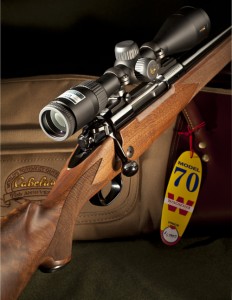
Twelve years after the Model 54, Winchester sought to remedy those issues with a new rifle dubbed the Model 70. "The Rifleman's Rifle" as it eventually became known had five improvements over the Model 54: a new trigger; new bolt stop, a safety that operated to and fro along the longitudinal axis of the rifle instead of the old swing-over style, a milled trigger guard and floorplate and a new stock design that favored the telescopic sight. It wasn't a big hit immediately because the rifle was introduced during the depths of the Depression, and during World War II production was halted to support the war, but in 1950 more than 75,000 went out the door to market.
In addition to a robust rifle with elegant lines the popularity of the Model 70 was enhanced by the array of calibers for it was chambered. Deer hunters could get the bolt action in everything from a .257 Roberts to a .300 Mag. The Model 70 was chambered in .30-30 as well as .35 Rem. And when it debuted, $40 could put one in your rack. I saw a mint pre-War Model 70 .30-06 recently at a gun show. The price tag was $1,700.
Much of the success of the Model 70 can be traced to-and remains to this day-an English and journalism professor by the name of O'Connor who nearly always had a version of the Winchester rifle with him as he hunted the world's game. It was his superb storytelling and shooting results that wooed many of us toward the Model 70. Though it has undergone several revisions-some terrible, others good-68 years later is remains one of the most successful rifles for deer or any other hunting as well.
Now with the hullabaloo over the Model 70, Remington wasn't sitting idle. It revamped the Model 30 into the Model 721 after the war, but hunters thought it a bit too austere. In 1963 Remington gave it another facelift along with improving the trigger, lock time and other internal changes gleaned from benchrest shooters. Christened the Model 700, this new classic rifle came in a new caliber destined to be a favorite as well, the 7 mm Remington Magnum. The Model 700 has been produced in so many variations during the past 42 years that it nearly defies description-short action, long action, carbine, stainless, titanium, wood, laminate, synthetic-a book could be dedicated to this rifle alone.
A mere five years after the model 700, Bill Ruger put his fertile mind to the task of creating a definitive rifle and came up with the Model 77. Solidly based in the Mauser 98 design, the Model 77 quickly rose to the status of a favorite in American deer hunting camps. Ruger's grasp of what hunters wanted combined with his genius at manufacturing and marketing, along with the ability to present a product at an affordable price virtually guaranteed the success of the Model 77.
Though several of America's favorite deer rifles have left us, victims of progress in terms of design and manufacturing, most are still with us. Those with a real nostalgia bug can still find well-made replicas of the Model '73 Winchester; even a reintroduction of the rifle from Winchester, as well as the stout Model 1886. The Savage 99 is pretty much moribund, but there are several on the used market. Winchester's '94 is still with us. The 1903 Springfield is about to be reintroduced by Springfield Armory, but sadly, the NRA can no longer sell sporter versions to its members. The Model 70, Model 700 and Model 77 bolt actions are the bedrock of today's deer hunters and will likely remain so for many years, as are the dozens of other rifles base on them. For those who long for traditional blue steel and a better grade of walnut, along with the hand finishing reminiscent of yesteryear, Kimber's 84 and 8400 models will surely fill the bill.
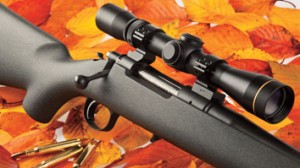
New calibers, modern materials and the progress made in bullets powders and manufacturing continue to create new favorites for deer hunters. Folks like Ed Brown, John Lazzeroni and Melvin Forbes are creating near works of art that are lighter, more powerful and more accurate than almost any of the classics. In many areas of the country deer populations are not only good, they are a problem that deer hunters are the best equipped to solve. It's a good time to be a deer hunter.


